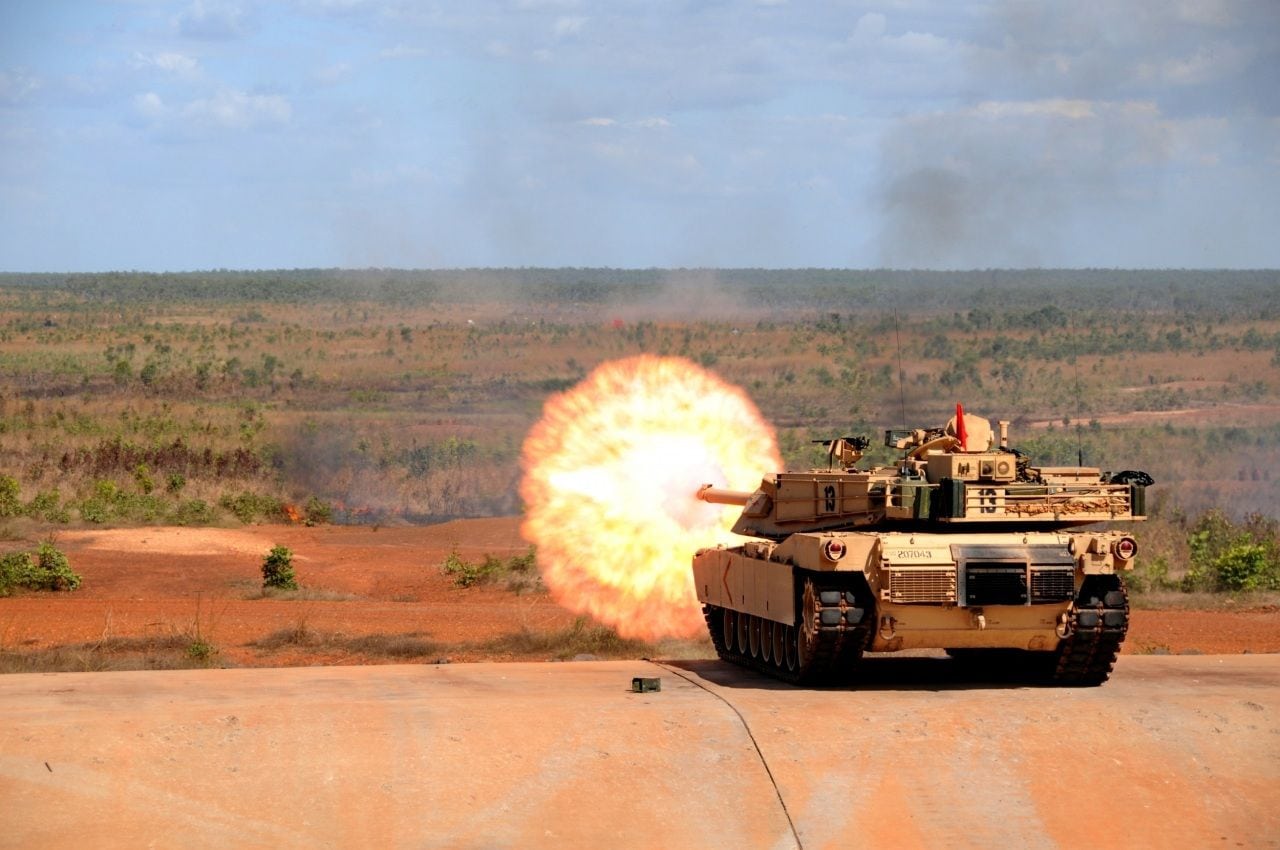This month, the sale of 250 U.S.-produced Abrams tanks to Poland was officially announced. On July 14, the sale was confirmed in a statement by Poland’s deputy prime minister and ruling party leader, Jaroslaw Kaczynski. “Our army will be enriched by a large number of Abrams tanks which are the most advanced in the world,” said Kaczynski. “If all goes well, deliveries will begin next year.”
Polish defense minister Mariusz Blaszczak likewise confirmed the sale: “So we are ordering the most modern tanks. Tanks available in the best-equipped version, tanks that are combat proven, tanks which were constructed to counter the most modern Russian T-14 Armata tanks.”
The sale, valued at USD $5.9 billion, is positive news for Polish national security. Poland is the most heavily fortified NATO country on the front line with Russia and one of the NATO members that spend the highest share of its GDP on defense.
Though it had already purchased the High Mobility Artillery Rocket Systems (HIMARS), the Patriot air defense system, and the coveted F-35 fighter from the U.S., Poland’s acquisition of the M1—technically the M1A2 SEP v3—means that it will become a more secure buffer on NATO’s eastern front.
Poland has been long overdue for an upgrade to its land combat vehicles. Up until this point, Poland has relied on a patchwork of obsolescent Soviet-manufactured tanks and aging German Leopard tanks to deter aggression from Russia.
For years there had been speculation about how Poland was going to acquire new tanks and various options it might have pursued in doing so. Poland petitioned France and Germany to participate in their Main Ground Combat System (MGCS) but had been denied membership as of 2020. Meanwhile, South Korea mounted a campaign to sell its Black Panther K2 tank to Warsaw, and there was a time when that purchase seemed like a possibility. However, a sale did not materialize.
In any case, acquiring the Abrams is ultimately more to Poland’s advantage than the Leopard or Panther options. The M1 is the most cutting-edge tank in the world. Most importantly, it could be equipped with the Trophy active protection system (APS) that distinguishes it as the most resilient vehicle against the anti-tank guided missiles (ATGMs) that the new Russian Armata tanks are believed to be equipped with. Neither the Leopard nor the Panther offers quite the same advantage in defensive technology.
The sale is also good news for the security of NATO’s eastern front as a whole. Russia’s military activity in the region for the last decade has underscored the true vulnerability of former Soviet countries to Russian encroachment through a conventional attack.
Russia’s 2014 illegal annexation of the Crimean Peninsula from Ukraine demonstrated to the international community that aggression and conventional invasion were no longer hypothetical actions in Moscow’s playbook. That reality has been repeatedly confirmed by the continuing situation in Eastern Ukraine, where clashes with Russian-backed insurgents have been frequent.
More recently, twin crises in Ukraine and Belarus have called additional attention to the true vulnerabilities in the defenses of frontline countries, particularly Poland. The political crisis in Belarus resulting from mass efforts to oust its authoritarian president Alyaksandr Lukashenka created a power vacuum in Minsk, which Vladimir Putin and Moscow swiftly stepped in to fill.
In what was effectively a soft takeover of the Belarusian government, Russia has used this opportunity to deploy a tank battalion to Belarus’ border with Poland, revealing the full extent to which the latter’s aging tank battalions exposed it to the danger of conventional conflict breaking out in this area, already full of potential hot spots between the Baltic States and the Black Sea.
This April, a massive buildup of Russian forces descended on the Crimean border with Ukraine. Some were later recalled by Moscow after NATO raised the alarm, and the international community took an unequivocal stance to condemn the move. However, about 80,000 troops and their equipment were left behind in Crimea.
Other NATO allies in Eastern Europe, such as the Baltic States, are similarly vulnerable. However, the strategic pressure placed on Poland by Moscow has often been the most overt.
Given this, Warsaw appears ready to deploy the Abrams tanks to its border with Belarus as soon as deliveries begin in 2022. Blaszczak stated that as soon as the Polish military receives the tanks from the U.S., they will be deployed to the eastern part of the country. “These tanks will be in the first line of defense, of course, if there will be such a need,” he said.
With the increasing sophistication of Russia’s armed forces and Moscow’s well-established willingness to use both hard and soft power to expand its sphere of influence, Poland’s vulnerability makes the rest of the region more vulnerable in turn. The Abrams is a reinforcement that improves the preparedness of the front as a whole for the sudden event of a conventional Russian attack.
Sarah White is a Senior Research Analyst at the Lexington Institute. Prior to joining Lexington, Sarah held internships at the Albright Stonebridge Group and the Woodrow Wilson International Center for Scholars. She earned an M.A. in Latin American Studies in 2019 from Georgetown University’s Walsh School of Foreign Service, and a B.A. in political science and Spanish from Wake Forest University in 2017. Sarah is fluent in Spanish, proficient in Portuguese, and conversational in French. She is a native of McLean, Virginia.

